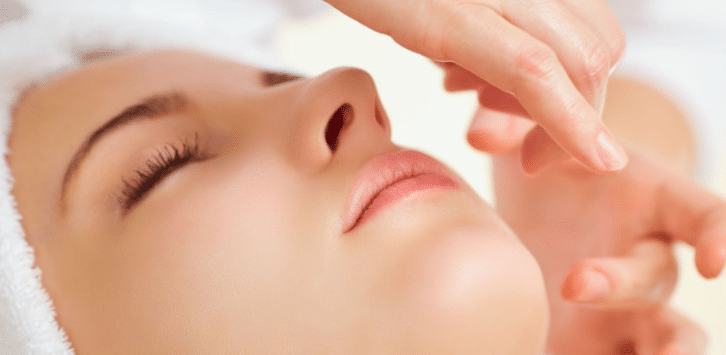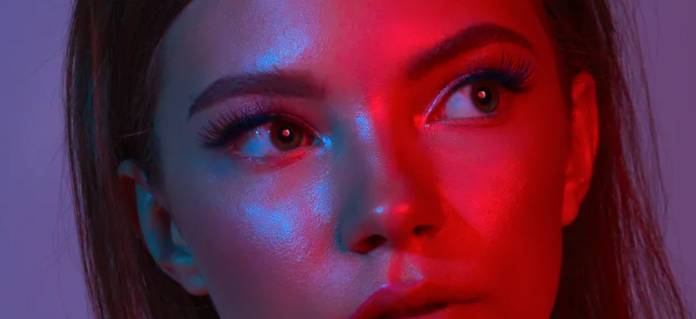What is LED Light Therapy and How it Works
LED lights have been around since the 1960s, but have only recently been used as a skin treatment. LED light therapy has grown in popularity and been adopted by dermatologists and aestheticians in the past few years as a noninvasive skin treatment for skin rejuvenation, acne, sun damage, wounds, and other skin problems. Celebrities like Kate Moss and January Jones shared their skincare stories on social medias to show how they fight against acne and signs of aging using just LED light technology.
In this article, we will go deep with you to explore how LED light therapy works and who might be a good candidate. We also cover the possible side effects.
| What is LED light therapy?
LED light therapy is a skincare treatment used to sooth and rejuvenate skin, minimize wrinkles, acne, dark spots, and scars, according to Harvard Health Publishing.
LED light therapy uses the principle of photodynamics to activate deep cells and make the skin better metabolize. After the light is absorbed by the skin, the light energy is converted into intracellular energy, which relaxes and strengthens the capillaries and produces a photochemical reaction-enzymatic reaction with the skin to increase the content of glycogen and protein, thereby promoting cell metabolism and synthesis.
It works by using different wavelengths of light to target specific areas of the face (or in some cases other parts of the body) . These LED light is skin-safe, low-level, these include:
- Blue
- Red
- Green
| How does different light works?
The red and blue light photodynamic therapy instrument uses narrow-spectrum LED light source to emit a kind of cold light, which does not burn the skin. It converts light energy into intracellular energy, accelerates the cycle of cell growth, and stimulates fiber cells to produce collagen. It can bring unexpected effects on repairing aging skin, acne skin, patchy skin, wrinkled skin, allergic symptoms, sunburned skin, and will not cause any harm or discomfort to the skin. Photodynamic is the treatment of acne and skin rejuvenation. One of the safest and most effective instruments.
● Red light (635nm) has the characteristics of high purity, strong light source, and uniform energy density. It has significant effects in skin care and health treatment, and is called bioactive light. Red light can increase cell activity, promote cell metabolism, and make the skin secrete a large amount of collagen and fibrous tissue to fill itself. Accelerate blood circulation, increase skin elasticity, improve skin chlorosis and dullness, so as to achieve the effects of anti-aging, anti-oxidation, and repair, which cannot be achieved by traditional skin care.
● Blue light (470nm) matches the light absorption peak of the metabolite porphyrin of P. acnes. The chemical de-stimulation process of the metabolite of P. acnes produces a large amount of singlet reactive oxygen species. It can produce a highly oxidizing environment for Propionibacterium acnes, which can cause the death of bacteria from the face and then clear the acne on the skin.
● Green light (560nm): natural and soft light color, has the effect of neutralizing and calming nerves, can improve anxiety or depression; regulate skin gland function, effectively dredge lymph and remove edema, improve oily skin, acne, etc.
| The benefits of LED light therapy facial
The LED light therapy facial treatment will help treat acne breakouts, fine lines and wrinkles, post inflammatory scarring and rosacea. It will not only help minimise acne, but also soothe your skin and reduce both redness and inflammation.
Acne. Blue light is often used to treat acne. Studies show that blue light can kill the bacteria responsible for acne. It can also ease how much your oil glands make. This stops the hair follicle from becoming clogged and causing acne. Red light is also typically used in combination with blue light to help ease inflammation and redness.
Aging. Red light stimulates skin cells called fibroblasts. These help make collagen, which are important parts of skin recovery. Some studies have found that red LED light therapy tightens skin, reduces wrinkles and fine lines, and makes skin smoother and softer. Photodynamic therapy with 5-aminolevulinic acid and LED light also ease fine lines and makes the skin softer.
| Does it really work?
In the past, Navy SEALs used LED light therapy to help heal wounds. The treatment led to improvements of more than 40% Trusted Source in musculoskeletal injuries in team members. It also reduced wound healing time.
When it comes to cosmetic procedures, a review Trusted Source of several studies indicates that LED light therapy devices can improve a range of skin conditions, including psoriasis and mild-to-moderate acne.
According to the American Academy of Dermatology, most people with acne will see an improvement in their symptoms from using LED light therapy, but they should not expect all acne to clear.
| The side effects of LED light therapy
Generally, LED light therapy is safe. The procedure is noninvasive and does not cause burning or pain since LEDs don’t contain UV rays. this is considered a safer form of light therapy that won’t cause long-term damage to your skin.
However, there are some short-term side effects found in some conditions. include:
- inflammation
- rashes
- skin redness
- tenderness
People should not use LED therapy if they take certain medications, such as isotretinoin (Accutane) for acne, or use anything on your skin that cause sensitivity to sunlight. Please talk with your doctor if your currently have an active rash, psoriasis or other skin conditions when you want to use LED therapy with other treatments in conjunction.
| Summary
LED light therapy appears to be a safe treatment for several skin conditions, including acne, skin aging, skin wounds, and other problems.
Research indicates that this therapy offers promising results, although people should not expect a 100% improvement. Also, the results are not always permanent, so follow-up treatments may be necessary.




